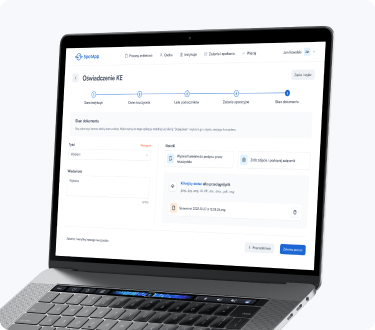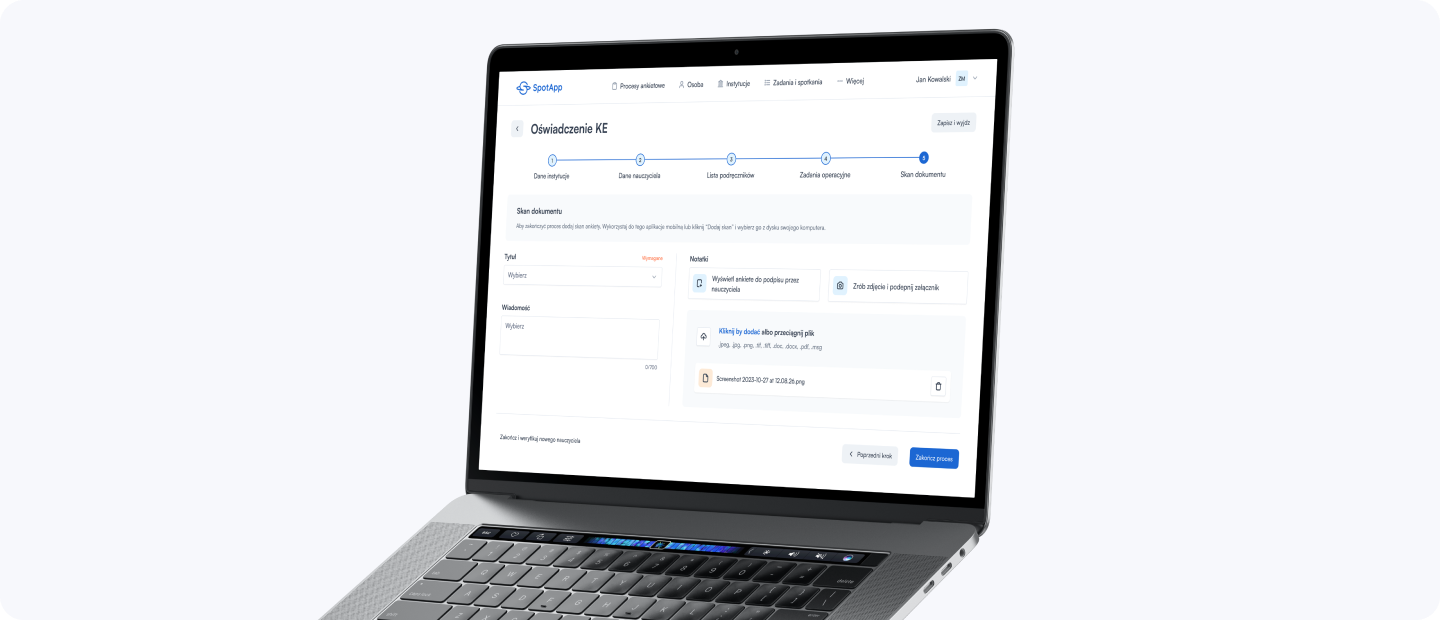Web application developed
for Poland’s leading
educational publisher
SpotApp was built for WSiP, one of Poland’s most important educational publishers. The company has been operating continuously since 1945, has printed millions of textbooks, and been online since 1998. An average of 1.2 million users per month visit WSiP sites and download 12 million educational materials from one of the company’s sites (Uczę.pl).
Techstack
Creating an application that would facilitate the work of educational consultants
WSiP needed a professional tool to help education consultants and Telecenter staff obtain information from teachers, mainly through surveys. Previously, each educational consultant surveyed teachers in written form and then entered the survey results into the system, usually before an upcoming grading period.
One of WSiP’s goals was to free its staff from unnecessary paperwork and digitize its processes. After consultation with us, they determined that a web application would be the best solution. It would enable educational consultants to collaborate more efficiently and easily to complete their teacher surveys. Once the surveys were completed, all data could be uploaded to HubSpot, the CRM platform that connected all of WSiP’s processes and managed data. The application would also streamline the work of Telecenter employees, who could use SpotApp to record phone calls made to teachers to sign them up for meetings and conferences via a dedicated module.
WSiP was looking to build a professional product, first through an MVP with basic functions that would then be further developed with new modules. To ensure the software would meet the audience’s needs, we conducted a comprehensive product workshop for the client to address current challenges and issues, then began working to build a dedicated system.

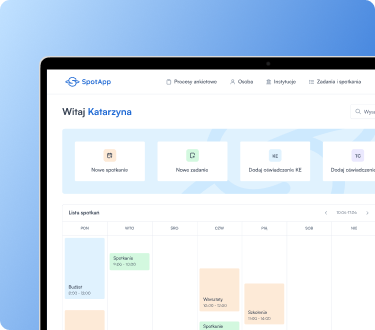

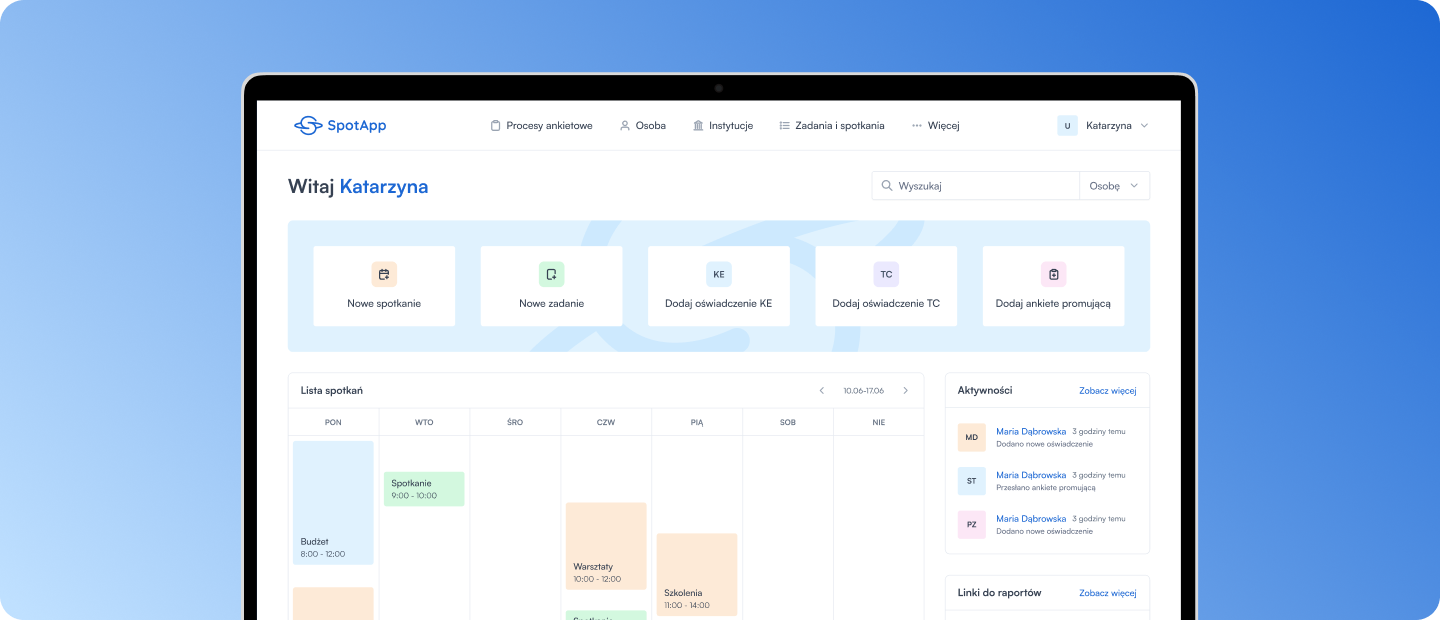
How we helped our client to unlock the potential
Through Scrum processes, SpotApp was developed in two work phases. In the first phase, we created an MVP that included the functionalities that WSiP employees needed most and then tested it with the audience. In the second phase, we will build an administrator panel and a dedicated module for Telecenter employees called Central Meetings.
We designed a stable interface to connect our solution with HubSpot’s API to meet the project requirements. Implementing this integration was challenging since we received all our data from HubSpot’s environment. HubSpot’s API also imposed limitations we had to deal with on an ongoing basis.
To scale the application appropriately, we built a solution that allows users to multiply the limits placed on queries imposed by the CRM and the algorithm that manages queries when a limit is encountered. To check performance, we performed tests to verify the solution’s reliability. We also completed unit tests and code reviews to check the application for bugs.
The infrastructure of the development version of the app was deployed via AWS Cloud Services, guaranteeing both the availability and security of the service during the development and testing process.
Per the client’s request, the production version of the application was adapted for deployment on its private servers, additionally protected by VPN. The automation of the entire deployment and integration process was made possible by using Bitbucket Pipelines and Docker.
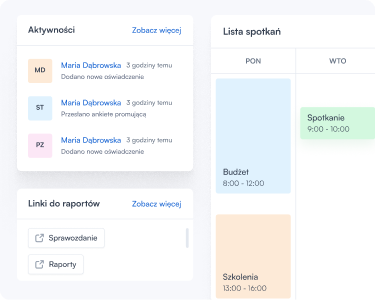
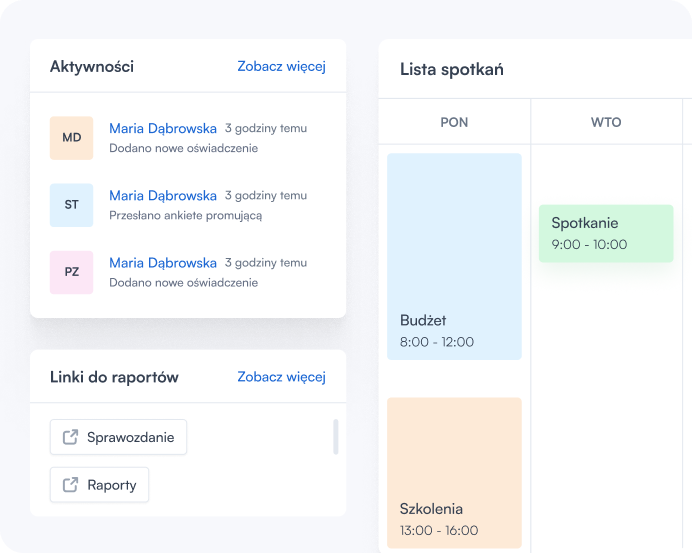
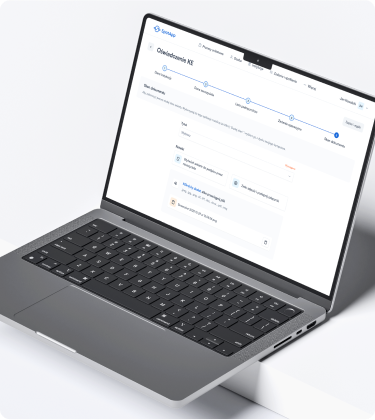
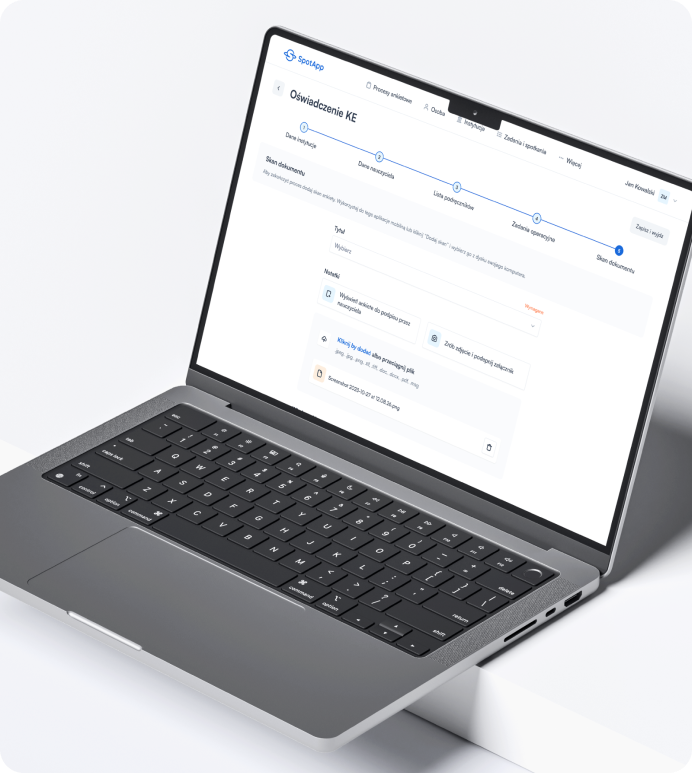
Key Features Delivered
Digital survey module
The application enables consultants to gather information from teachers through digital surveys.
Integration with HubSpot
The application connects to the external HubSpot API, allowing for automatic data retrieval and synchronization.
Admin panel
The admin panel allows for intuitive and effective application management.
Telecenter employees module
Extension of the application with a special module for Telecenter employees.
Additional security layer with VPN
The use of a VPN to secure access to application servers further protects against unauthorized access.
Deployment on client's private servers
The production version of the application has been adapted for deployment on client's private servers, increasing control over security.
